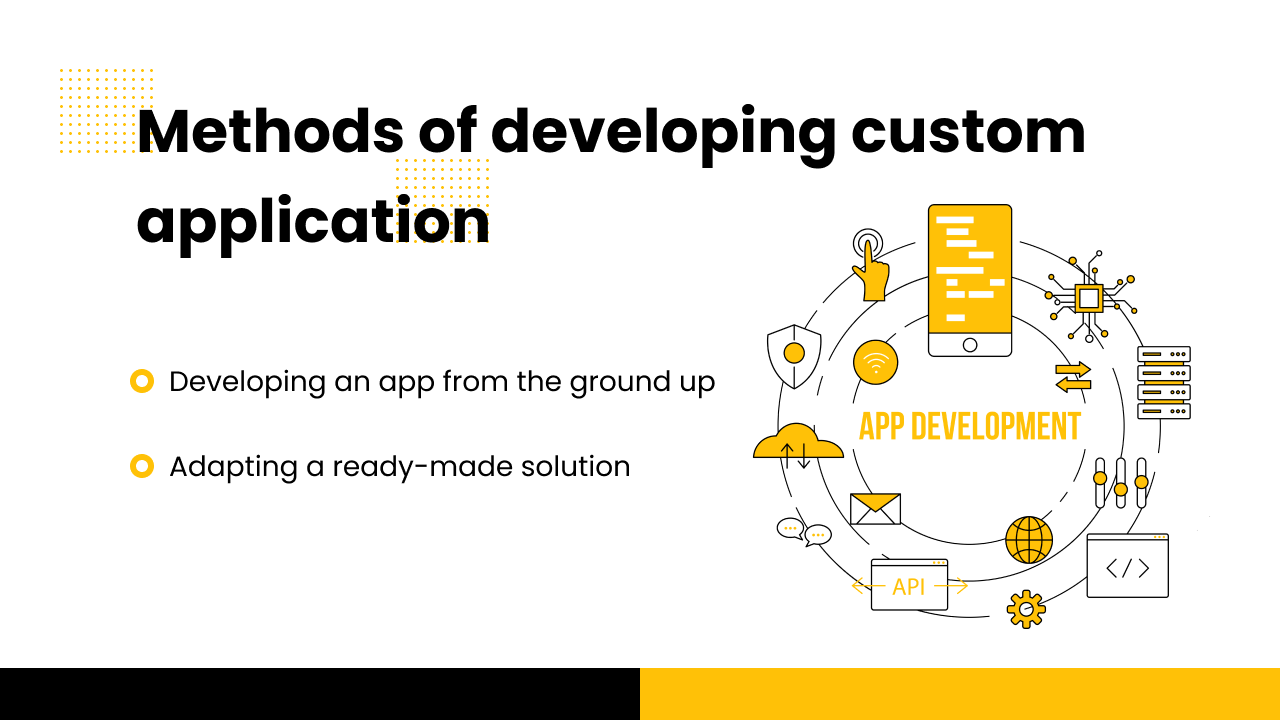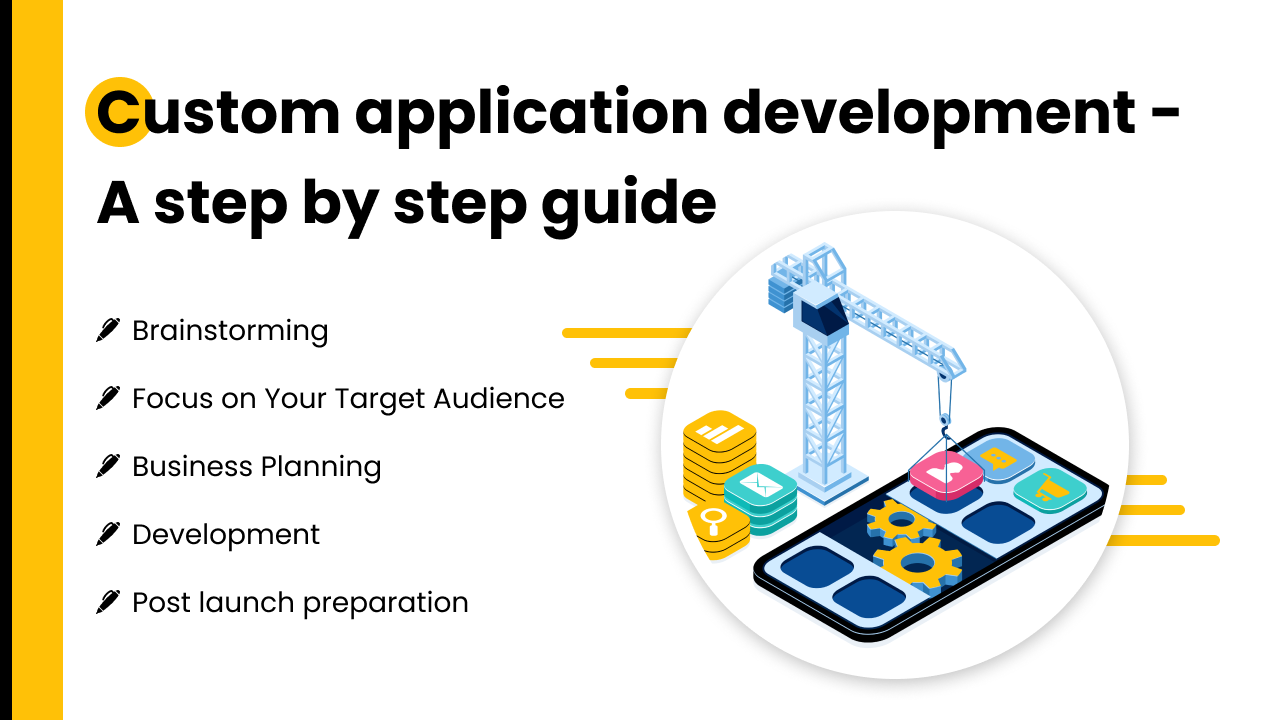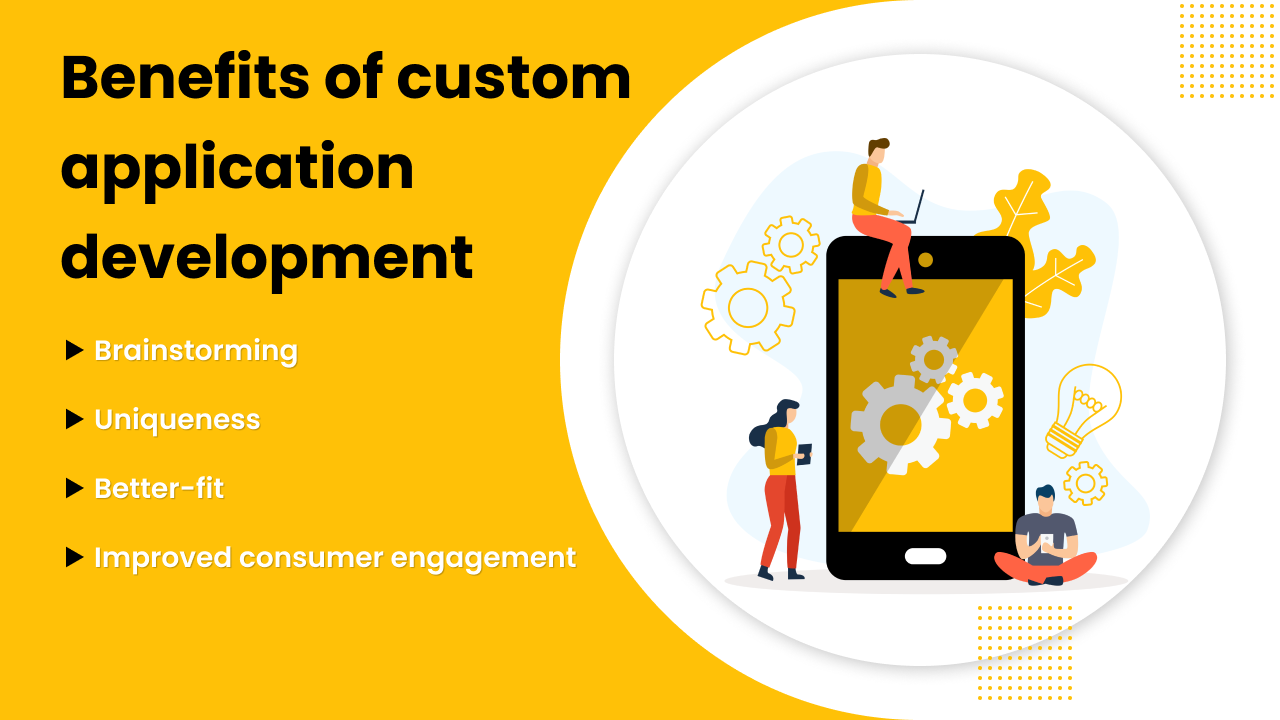In 2023, the app market has gained a lot of traction. The Google Play Store and the Apple App Store have millions of applications available now. As a result, businesses are increasingly relying on mobile app development to preserve their competitive advantage.
However, we will go through custom mobile app development in this post. This article will cover methods and steps of developing custom applications, and benefits, followed by the disadvantages.
What is Custom App Development?
Developing custom applications involves a high level of adaptability to the needs of the customer. Because it has a specific set of features specified by the client company, an application launched after development is typically one-of-a-kind.
Each business has its unique set of circumstances, target groups, and procedures. As a result, generic technological solutions may be insufficient to address each company’s specific business challenges. In such instances, businesses must design a custom mobile application to improve the efficiency of their operations and client pleasure.
Also Read – App Development Cost (2023)
Methods of Developing a Custom Application
Custom mobile applications may be created in one of two ways: from scratch or by customizing an off-the-shelf product.

Developing an app from the ground up
One method for developing a custom mobile app is to start from scratch. Although it is a complex procedure, it assures the application’s originality and can provide the organization with a competitive edge that is difficult to duplicate. In general, there are two approaches to creating an app from the ground up:
- Outsourcing
- In-house development
Adapting a ready-made solution
Modifying an off-the-shelf solution if an existing application fulfills your business needs saving for a few details might be a cost and time-saving choice. The problem with this method is that if you can turn conventional software into a custom mobile app, your competitors will be able to imitate it rapidly. As a result, it’s unclear how long such a solution will give the organization a competitive edge. However, for startups or businesses with limited resources, this may be the best option.
Custom Application Development – A step-by-step guide
Step 01: Brainstorming
Brainstorming is the first step before approaching a bespoke app development business. Before getting started with custom app creation, one needs first to have a concept and conduct research based on it. It’s critical to consider a concept that either improves numerous lives or addresses a problem.

Step 02: Focus on Your Target Audience
Social media is a relatively new phenomenon. To advertise your business and attract the correct audience, you may publish information about your service on prominent social media platforms like Facebook, Instagram, and YouTube.
Consider YouTube to build a dedicated following before launching your subscription video-on-demand (VOD) website because this video-sharing medium is a terrific engine for promoting your video streaming services.
Send your potential customers an email with all of the details about your product, but keep in mind that the message must be professional and appealing.
Apart from that, set up online polls to see what your target audience wants. Remember to gather their information to create your target user profile.
Step 03: Business Planning
It’s time to plan after the concept and target audience have been established. It’s critical to devise a comprehensive strategy for the application’s success, one that will influence client satisfaction rates and lead to income-generating.
The following are some of the questions to consider while designing a corporate strategy:
- How will the application’s end-users learn about it?
- How much will it cost to get a single user?
- How much money will you need to break into the market?
These questions may be more useful once the app is out, but they are also important for determining deep linking, SEO optimization, ad slots, and other technical aspects of the app.
Step 04: Development
Create a minimum viable product (MVP).
A Minimum Viable Product is one of the initial stages of bespoke app development (MVP). It enables you to quickly test a concept and enter the market with a small expenditure. The MVP development service’s main goal is to offer an app with just enough functionality to attract early customers and gather feedback. Furthermore, if your product begins to generate revenue, you may reinvest it in the development of a full-fledged application.
Read Here – How To Build An MVP
Make use of modern technology
Make sure your app is powered by the most up-to-date technology to offer you a competitive edge.
- Using technologies like Appfigures, you can learn from your competition.
- Use SDKs to let you implement boilerplate functionality faster, such as authentication.
- Consult your team about the many forms of bespoke apps (native vs. cross-platform vs. PWA)
Testing and Quality assurance
After the MVP of the application has been built, it must be tested for any faults in functioning. Unidentified defects may cause chaos in the real world if discovered by users, hence the QA procedure should not be overlooked.
There are several methods for testing an application. A quality assurance specialist may inspect Android phones, iPhones, iPads, and other mobile devices. The MVP is matched to the initial requirement, responsiveness is tested, and defects and mistakes are communicated to the development team.
Usability testing with actual test users, such as early adopters, can be done in addition to having the app tested by a QA professional. The program can be deployed once it has been thoroughly tested and found to be free of functional defects.
Deployment
The development procedure has reached its conclusion. After the app has been thoroughly tested, it may be made available to the broader public. The app must be published to several app shops to reach the market. Google Play Store and Apple App Store have different criteria. As a result, the submission rules must be thoroughly understood; otherwise, the app may be rejected.
Step 05: Post-launch preparation
Promotion of your App
The goal of mobile app marketing is to increase user involvement with the app. Even the best program might be rendered useless if it is not effectively advertised. As a result, a new customized mobile application should be properly promoted to spark user interest.
Gather feedback
Once the app is live, it’s critical to gather feedback from users. As soon as the app is up and running and real consumers are using it, ask them for feedback. Users that participate in the feedback process will care about the app’s success.
Make modifications
Feedback is critical, as we covered in the last stage. User retention is aided by working on enhancements and delivering a new version of the program in response to feedback. People may quit using an app if it does not improve, forcing them to look for alternatives. When making modifications to an application, the same development stages as described above should be followed.
Maintenance and Assistance
Application maintenance, like enhancements, is continuous. Mobile operating systems for Android and iOS will also receive updates if your application receives new versions. Retaining the development team is critical for ensuring that the program is compatible with the most recent versions of the operating system.
Also Read – Food delivery app development
Benefits of Custom Application
Scalable: When a company has its mobile application, it is simple to make updates and alterations to it. Because business is a dynamic activity, flexibility is essential. The size of the company may fluctuate over time, or external events may influence the company’s strategic decisions. A corporation should have an adaptive tool in such situations.
Uniqueness: A customized mobile application provides businesses with a competitive advantage that is tough to duplicate. The goodwill and commercial worth of a firm might benefit from its distinctiveness.

Better fit: Customized mobile app development guarantees the app is integrated with the company’s current structures, such as software and tools.
Improved consumer engagement: Custom mobile applications enable businesses to provide personalized news, notifications, and updates about their products and services to customers in real time. They also give businesses the ability to track client preferences and behavior, which may help them improve their personalized marketing efforts.
Disadvantages of developing Custom Applications
Higher costs: The cost of developing a custom application is higher for two reasons: First, compared to normal applications, it necessitates a greater fixed cost commitment. Second, bespoke applications need ongoing maintenance and performance evaluation, recorded in the income statement as an expenditure.
Required time: When compared to ready-to-use off-the-shelf apps, building an app from scratch or customizing an off-the-shelf software takes longer to deploy.
When compared to ready-to-use off-the-shelf apps, building an app from scratch or customizing an off-the-shelf software takes longer to deploy.
It is not certain that the deployment will take place: General-purpose programs may or may not be flawless, but they will always function. A bespoke mobile application project may fail.
Conclusion
By fundamentally modifying, redefining the market, and retraining users, the mobile app business has found a new equilibrium. With user comfort in mind, the demand for custom-built applications has risen.
Organizations are always changing to improve operational efficiency and fulfill consumer demands (deep-rooted in their choices). A custom mobile app development firm can design a best-in-suite solution for organizations to do more by addressing their needs.



















.png)
.png)
.png)



Leave a Comment